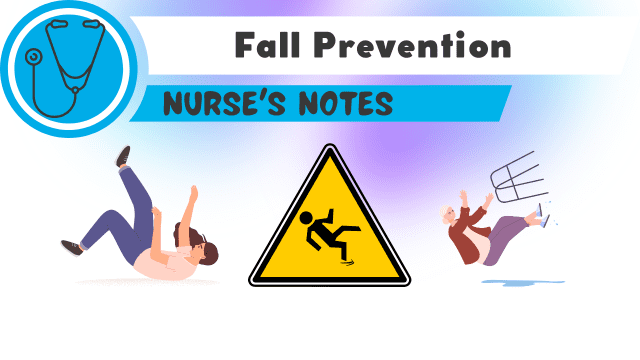Little Known Facts About Dementia Fall Risk.
Little Known Facts About Dementia Fall Risk.
Blog Article
The Ultimate Guide To Dementia Fall Risk
Table of ContentsDementia Fall Risk Fundamentals Explained4 Simple Techniques For Dementia Fall RiskHow Dementia Fall Risk can Save You Time, Stress, and Money.The 7-Minute Rule for Dementia Fall Risk
An autumn risk evaluation checks to see how likely it is that you will drop. It is primarily provided for older grownups. The evaluation generally includes: This includes a series of concerns about your overall health and if you've had previous drops or issues with balance, standing, and/or strolling. These devices evaluate your toughness, equilibrium, and stride (the way you walk).STEADI consists of testing, examining, and intervention. Interventions are suggestions that might decrease your threat of falling. STEADI consists of 3 actions: you for your danger of succumbing to your threat elements that can be enhanced to try to stop drops (for instance, balance troubles, impaired vision) to decrease your threat of dropping by using effective techniques (for instance, providing education and resources), you may be asked numerous questions including: Have you fallen in the previous year? Do you really feel unsteady when standing or walking? Are you stressed over dropping?, your company will examine your toughness, balance, and gait, using the adhering to autumn evaluation tools: This test checks your stride.
If it takes you 12 secs or even more, it may suggest you are at higher danger for a fall. This test checks toughness and balance.
The placements will obtain harder as you go. Stand with your feet side-by-side. Move one foot midway onward, so the instep is touching the big toe of your various other foot. Relocate one foot completely in front of the other, so the toes are touching the heel of your various other foot.
Dementia Fall Risk for Dummies
Most falls take place as an outcome of several contributing elements; consequently, managing the risk of dropping starts with determining the elements that add to drop danger - Dementia Fall Risk. A few of the most pertinent danger elements consist of: Background of prior fallsChronic medical conditionsAcute illnessImpaired stride and balance, reduced extremity weaknessCognitive impairmentChanges in visionCertain risky medications and polypharmacyEnvironmental factors can additionally boost the danger for drops, consisting of: Poor lightingUneven or damaged flooringWet or unsafe floorsMissing or damaged hand rails and get hold of barsDamaged or incorrectly equipped equipment, such as beds, mobility devices, or walkersImproper usage of assistive devicesInadequate supervision of the individuals living in the NF, including those that display aggressive behaviorsA successful loss threat management program requires a comprehensive scientific analysis, with input from all participants of the interdisciplinary team

The treatment strategy should likewise consist of treatments that are system-based, such as those that advertise a secure setting (ideal illumination, handrails, grab bars, etc). The efficiency of the treatments need to be reviewed occasionally, and the treatment plan modified as needed to mirror adjustments in the fall risk analysis. Implementing a fall danger management system using evidence-based best method can minimize the occurrence of falls in the NF, while restricting the potential for fall-related injuries.
The smart Trick of Dementia Fall Risk That Nobody is Talking About
The AGS/BGS standard suggests screening all grownups aged 65 years and older for autumn risk yearly. This testing includes asking individuals whether they have fallen 2 or more times in the previous why not try these out year or looked for medical interest for a fall, or, if they have not dropped, whether they feel unstable when walking.
People who have actually fallen as soon as without injury needs to have their equilibrium and gait assessed; those with gait or equilibrium abnormalities must obtain extra assessment. A history of 1 autumn without injury and without gait or equilibrium issues does not warrant additional evaluation past continued annual autumn threat testing. Dementia Fall Risk. A loss threat analysis is required as part of the Welcome to Medicare examination

The Only Guide for Dementia Fall Risk
Recording a drops history is among the high quality signs for loss avoidance and monitoring. A crucial part of risk analysis is a medicine testimonial. A number of courses of medications increase fall risk (Table 2). Psychoactive medicines specifically are independent predictors of falls. These drugs have a tendency to be sedating, modify the sensorium, and harm equilibrium and stride.
Postural hypotension can typically be eased by lowering the dose of blood pressurelowering drugs and/or quiting drugs that have orthostatic hypotension as a side impact. Use of above-the-knee assistance hose pipe and copulating the head of the bed boosted view may also decrease postural decreases in blood pressure. The preferred elements of a fall-focused physical exam are displayed in Box 1.

A yank time higher than or equal to 12 secs recommends high autumn risk. The 30-Second Chair Stand examination analyzes reduced extremity stamina and balance. Being incapable to stand from a chair of knee height without utilizing one's arms indicates increased loss danger. The 4-Stage Balance examination examines static equilibrium by having the individual stand in 4 settings, each progressively more tough.
Report this page